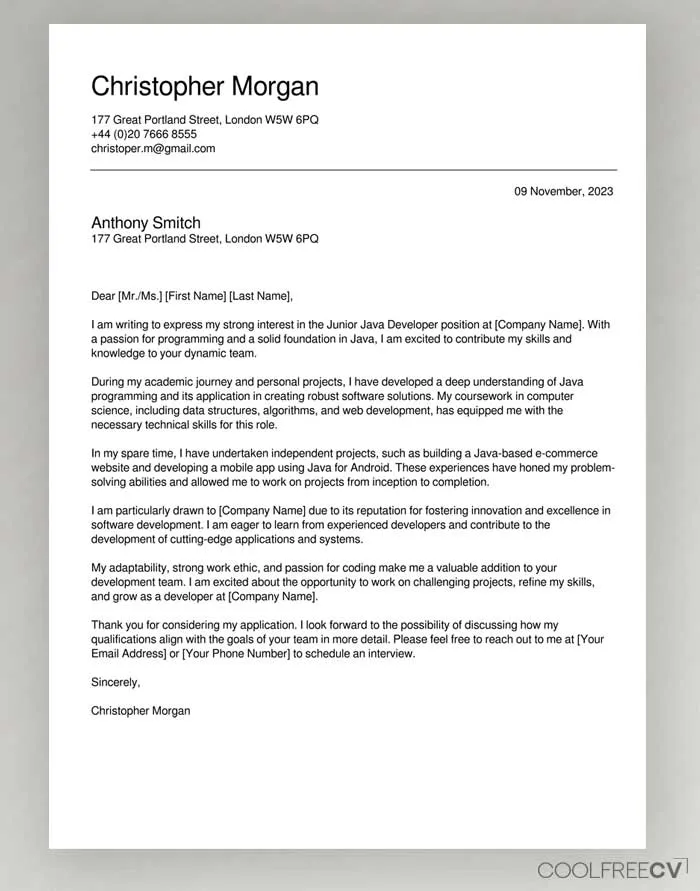Understanding the Importance of a Cover Letter
In the competitive landscape of job applications, a well-crafted cover letter is not merely an optional extra; it is a crucial element that can significantly impact your chances of securing an interview. A cover letter serves as your first direct communication with a potential employer, providing you with the opportunity to make a strong first impression. Unlike a resume, which offers a snapshot of your professional history, a cover letter allows you to showcase your personality, express your enthusiasm for the specific role, and articulate why you are the ideal candidate. It’s your chance to tell a story, connecting your skills and experiences directly to the job requirements and demonstrating a genuine interest in the company and the position. Ignoring the power of a cover letter can mean missing out on opportunities, while a thoughtful, personalized letter can be the key to unlocking your career aspirations. Remember, every application is a chance to stand out, and a cover letter is the perfect vehicle to achieve that.
Why a Cover Letter Matters
The importance of a cover letter stems from its ability to provide context to your resume. It allows you to explain career transitions, elaborate on specific skills, and address any potential gaps in your employment history. Recruiters and hiring managers often use cover letters to gauge your communication skills, attention to detail, and level of interest in the role. It also gives you a space to demonstrate that you understand the company’s values, mission, and the specific challenges and opportunities the role presents. A compelling cover letter can set you apart from other candidates by highlighting how your unique skills, experiences, and personality align with the job requirements. In essence, it humanizes your application, making you more than just a list of qualifications and experiences, and demonstrating your enthusiasm and eagerness to contribute to the organization. A good cover letter shows that you care enough to put in the extra effort, making a clear statement that you want the job.
What to Include in Your Cover Letter
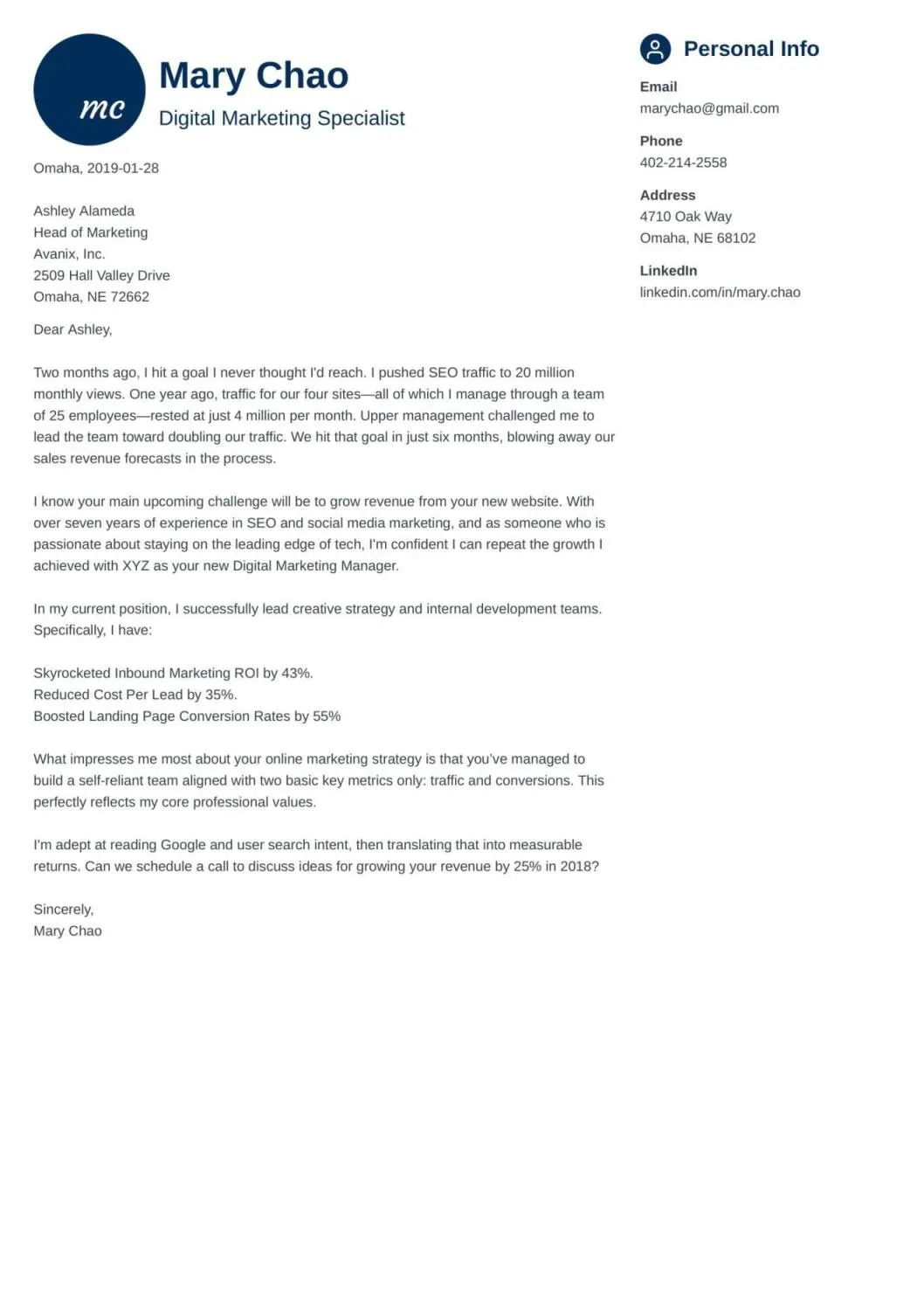
Contact Information and Date
Begin your cover letter by including your contact information at the top. This should include your full name, address, phone number, and email address. Ensure that the email address you use is professional; avoid using nicknames or informal language. Following your contact information, include the date. Directly below the date, include the hiring manager’s name, title, and the company’s address. If you are sending an email, include this information within the body of your email, usually before the greeting. This attention to detail demonstrates professionalism and respect for the hiring process, laying the groundwork for a positive impression. Accurate contact information helps ensure that the recruiter or hiring manager can easily reach you for further communication. It’s a simple step but a critical one to make sure your application is taken seriously from the start.
Greeting the Hiring Manager
The greeting is your first opportunity to connect with the hiring manager. The most effective greeting is a direct and personalized one, such as “Dear Mr./Ms./Mx. [Last Name].” Research the hiring manager’s name and title; if you cannot find it, opt for a general greeting like “Dear Hiring Manager” or “Dear [Department Name] Team.” Avoid generic greetings such as “To Whom It May Concern.” This personalization demonstrates initiative and attention to detail. Always double-check the spelling of the hiring manager’s name. A correct and respectful greeting sets a positive tone for the rest of your letter. Researching the hiring manager shows initiative and demonstrates your genuine interest in the role and the company. Taking the time to personalize your greeting speaks volumes about your commitment to the application process.
Opening Paragraph Grab Their Attention
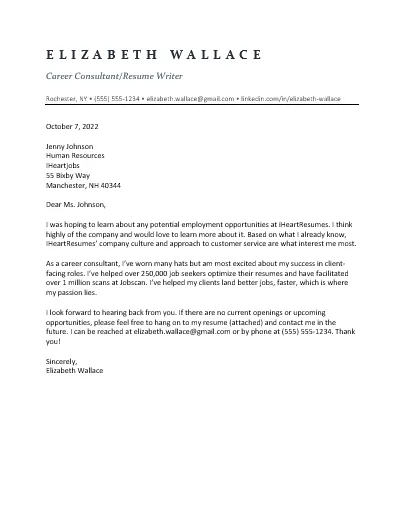
The opening paragraph is your chance to grab the reader’s attention. Start by stating the position you are applying for and how you learned about it. Then, immediately highlight something that captures the hiring manager’s interest. This could be a specific achievement, skill, or a unique aspect of your background that aligns with the job requirements. Instead of simply stating your interest in the role, show enthusiasm by mentioning how your qualifications match the company’s needs. Your opening should be concise, impactful, and tailored to the job description. The goal is to entice the reader to continue reading, making them eager to learn more about your qualifications and why you are the perfect fit. Think of it as a mini-elevator pitch: a brief, compelling introduction to who you are and why you are a strong candidate.
Highlighting Your Skills and Experience
In the body of your cover letter, provide specific examples of your skills and experience that align with the job requirements. Avoid simply restating your resume; instead, elaborate on your accomplishments and quantify your results whenever possible. Use action verbs to describe your responsibilities and achievements, and tailor your examples to demonstrate how you can contribute to the company’s success. This is where you bridge the gap between your skills and what the employer is seeking. Show, don’t just tell. Give concrete examples of how you have used your skills to solve problems, achieve goals, and create value in previous roles. Focus on the aspects of your experience that are most relevant to the position, making it clear how your expertise aligns with the needs of the company.
Tailoring Your Letter to the Job Description
The most effective cover letters are tailored to the specific job description. Carefully read the job posting and identify the key skills, qualifications, and experiences that the employer is seeking. Then, structure your cover letter to directly address these requirements. Use the same keywords and phrases from the job description when describing your skills and experiences, ensuring that your application resonates with the hiring manager. This targeted approach demonstrates your attention to detail and your understanding of the role and the company’s needs. Customizing your cover letter shows you have put in the effort to understand the specific requirements and are not simply sending a generic application. This personalized approach greatly increases your chances of catching the hiring manager’s eye.
Quantifying Achievements
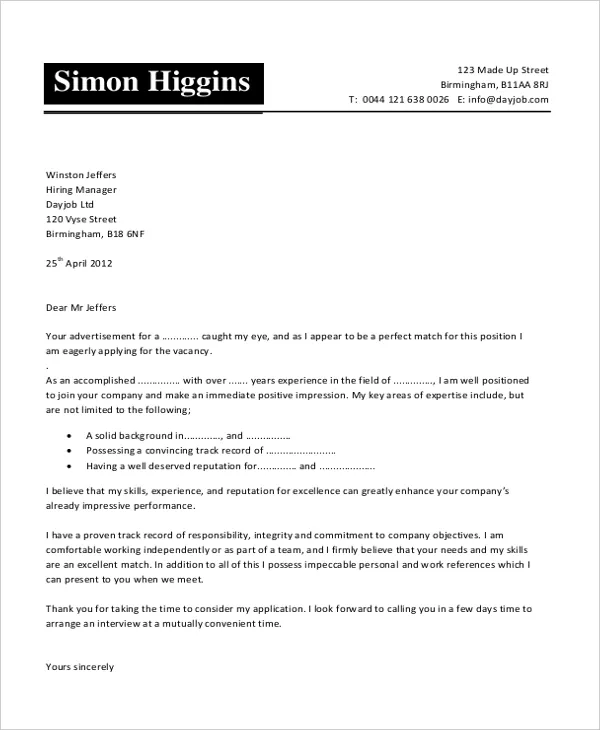
Whenever possible, quantify your achievements to demonstrate your impact and value. Instead of saying “Managed social media campaigns,” state “Increased social media engagement by 30% in six months.” Use numbers, percentages, and specific data to illustrate your successes. Quantifiable results make your claims more credible and provide tangible evidence of your abilities. This helps the hiring manager quickly assess the value you can bring to the role. Specific metrics also demonstrate that you have a clear understanding of performance and outcomes. Providing numbers transforms vague statements into impactful examples of your past achievements. Make sure the metrics are relevant to the job and are clearly tied to your accomplishments.
Expressing Your Enthusiasm
Throughout your cover letter, express your enthusiasm for the position and the company. This should be done genuinely and authentically. Share why you are excited about the opportunity and what attracts you to the company’s mission, values, or culture. This shows that you are not just looking for a job but are genuinely interested in the specific role and organization. Expressing enthusiasm helps you connect with the hiring manager on a personal level and indicates that you are likely to be a motivated and engaged employee. Your enthusiasm also conveys your passion and dedication, suggesting you will go the extra mile in this position. Expressing genuine interest in the job makes a strong impression.
Closing Paragraph and Call to Action
In your closing paragraph, reiterate your interest in the position and express your gratitude for the opportunity to be considered. Include a call to action, such as inviting the hiring manager to contact you to schedule an interview. Make it easy for them to take the next step. Keep the closing brief and professional, and avoid being overly assertive or demanding. Reiterate your enthusiasm, make your contact information readily available, and make it clear that you are available for an interview. Close with a professional sign-off, such as “Sincerely” or “Best regards,” followed by your name. The closing reinforces your interest and leaves the hiring manager with a positive final impression. A strong call to action makes the next steps clear and shows your proactive approach.
Formatting Your Cover Letter
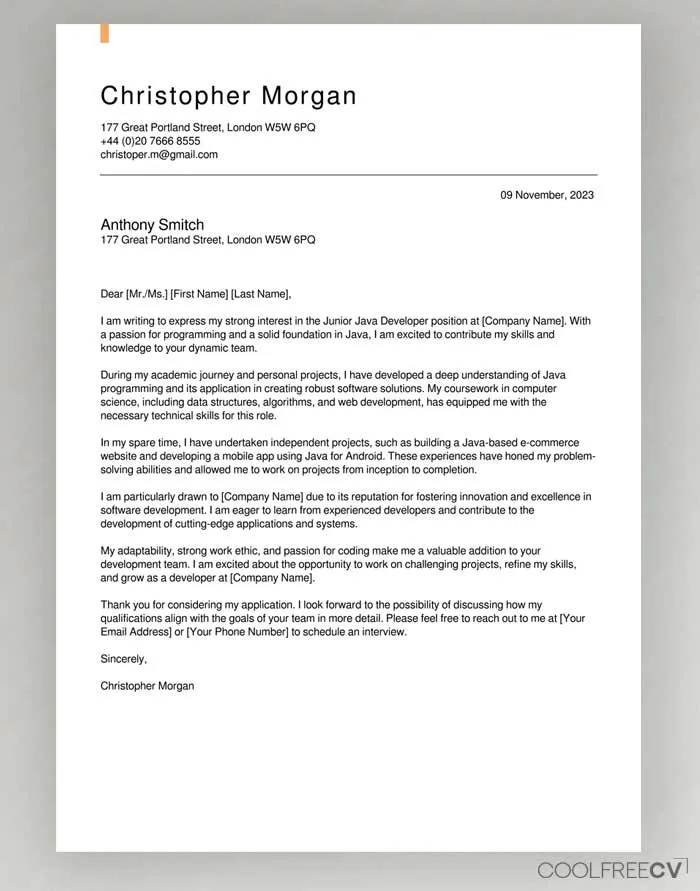
Font and Style Guidelines
Use a professional and easy-to-read font, such as Times New Roman, Arial, or Calibri, with a font size between 10 and 12 points. Ensure that your cover letter is properly formatted with clear headings, bullet points (if necessary), and consistent spacing. Avoid using overly ornate or distracting fonts, and make sure your text is easy on the eyes. Clean formatting demonstrates professionalism and attention to detail, which are important in the workplace. Proper font selection and formatting make your cover letter visually appealing and ensure that the content is easily readable. This makes the hiring manager’s job easier and shows respect for their time.
Length and Structure
Keep your cover letter concise, ideally no more than one page. Structure your letter logically, with a clear opening, body paragraphs, and a concise closing. The opening should immediately grab the reader’s attention, followed by a body that highlights your skills and experience relevant to the job. The closing should reiterate your interest and provide a call to action. A well-structured cover letter allows the hiring manager to quickly understand your qualifications and assess your suitability for the role. Ensure your letter is easily navigable, with clear paragraphs and well-defined sections. This structure helps present your information in an organized manner, making it easier for the reader to process your qualifications effectively.
Proofreading and Editing
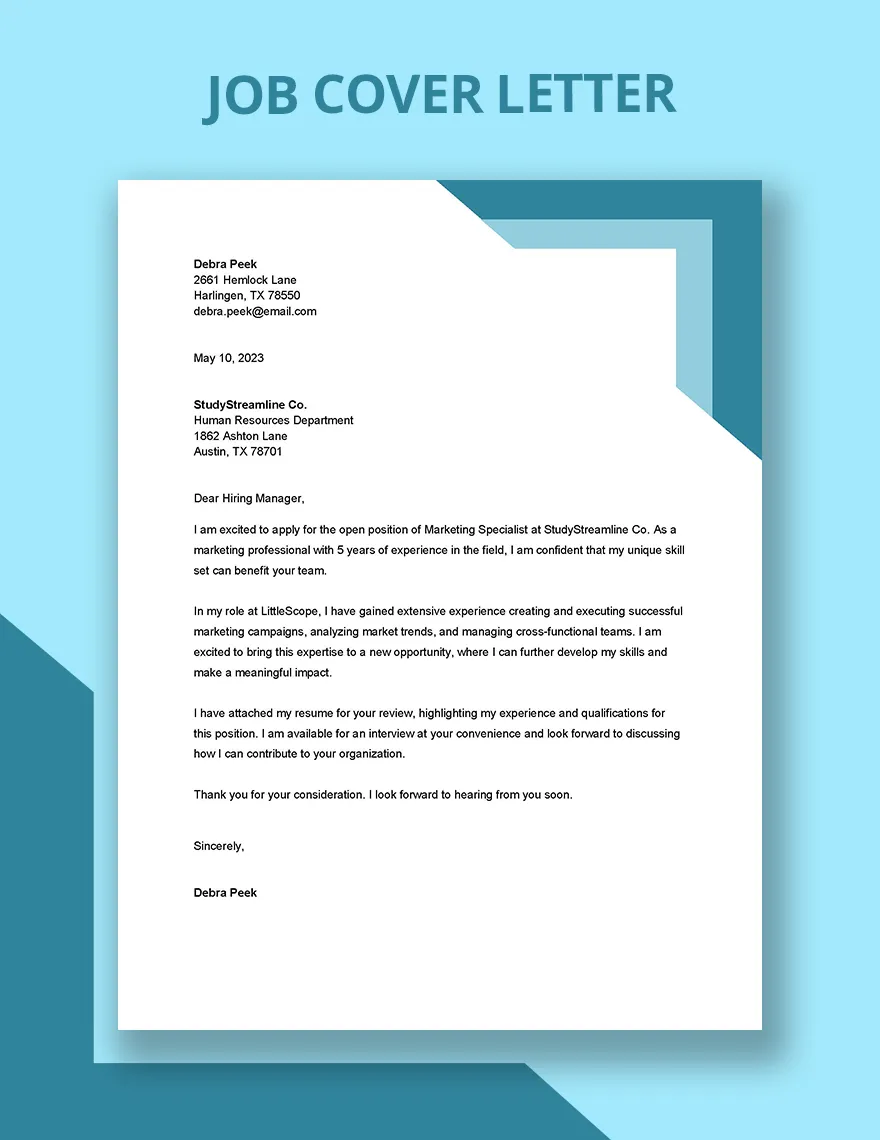
Proofreading is a critical step in the cover letter creation process. Carefully review your cover letter for any spelling, grammatical, and punctuation errors. Typos and errors can undermine your credibility and make you appear careless. Read your cover letter aloud to catch any awkward phrasing or sentence structure issues. It’s also beneficial to have someone else review your cover letter; a fresh pair of eyes can often catch errors you may have missed. Proofreading ensures that your cover letter is polished, professional, and free from errors. Make sure your writing is clear and concise, conveying your message effectively. A perfectly edited cover letter reflects professionalism and attention to detail, setting you apart from other candidates.
Common Mistakes to Avoid
Avoid common mistakes such as using generic cover letters, failing to tailor your letter to the specific job description, and including irrelevant information. Avoid errors in grammar and spelling. Do not ramble or be overly wordy. Avoid negative language or complaining about previous jobs. Make sure your cover letter is specific and focused on the job you are applying for. Ensure your cover letter is error-free, demonstrates a thorough understanding of the job requirements, and clearly showcases your skills and experience. These common mistakes can instantly undermine your chances of getting an interview. Taking the time to avoid these pitfalls will dramatically improve the effectiveness of your cover letter.
Seeking Feedback
Before submitting your cover letter, seek feedback from trusted sources, such as career counselors, mentors, or friends. Ask them to review your letter for clarity, content, and overall effectiveness. They can provide valuable insights and help you identify any areas that need improvement. Seeking feedback demonstrates your commitment to presenting the best possible application and shows your ability to accept and act upon constructive criticism. A second set of eyes can catch mistakes you might have missed and ensure your cover letter meets the highest standards. Use feedback to improve your letter.
